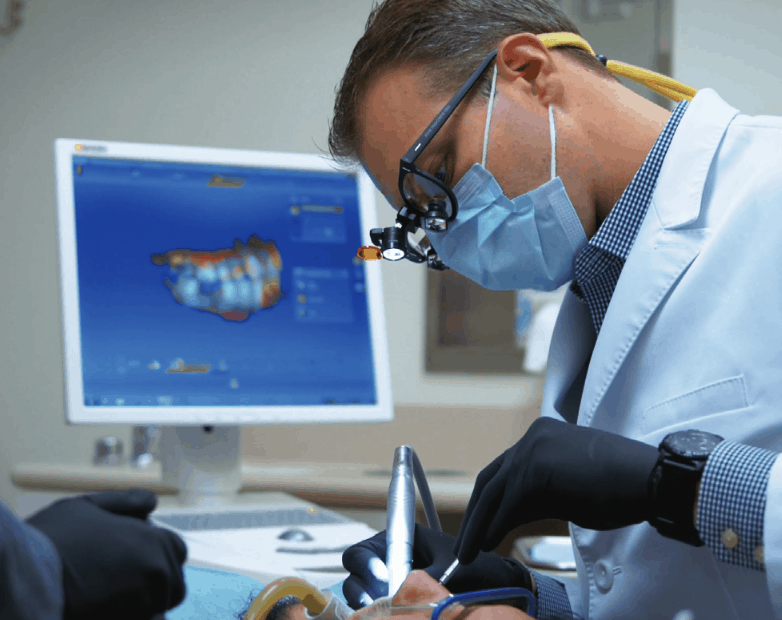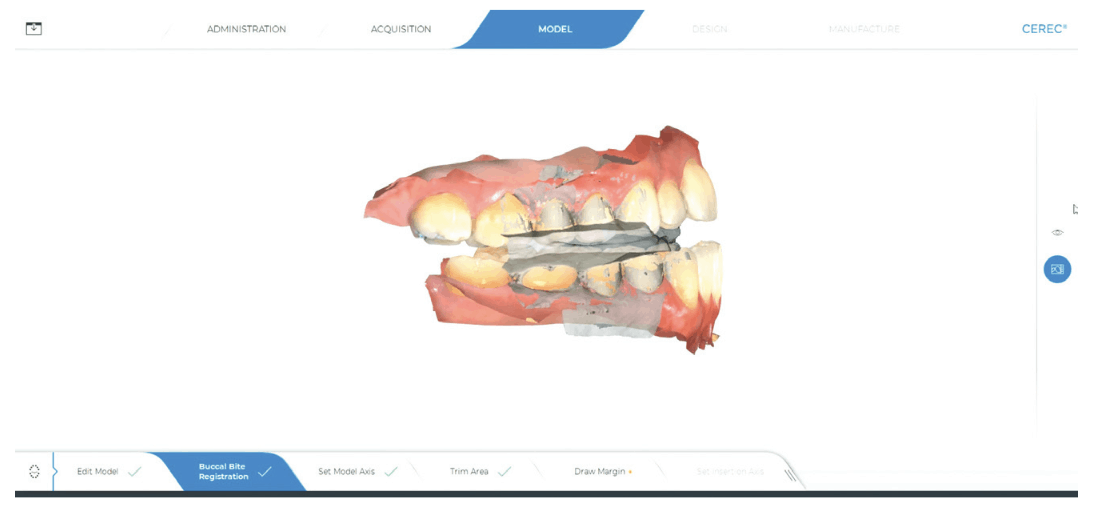by John Pasicznyk, DDS

”1’ve made a huge mistake” are words you never want to think when starting a career in dentistry. Yet, that’s exactly where I found myself early on. By all accounts, life should have been great: I recently bought a growing fee for service practice just miles from my home, taking care of patients that appreciated the dentistry I was doing, and had a great team around me. Unfortunately, I was experiencing the exact opposite; I had no joy or excitement in my work and was struggling to go into the office every day. I couldn’t quite put my finger on why I felt the way I did – I simply was not happy living by the old dental adage of “drill, fill, and bill.” If this story sounds familiar to you, don’t worry. I’m living proof that it’s possible to revitalize your enthusiasm for dentistry and create a change in your practice. In just a few short years, I’ve transformed my practice from a typical restorative practice to a multi-disciplinary dental facility with an emphasis on sleep medicine. This shift in the practice didn’t happen overnight, and there was no magic bullet, but I am confident that without adding dental technology to the practice, I would not be where I am today.

One of the hardest aspects of dentistry is being a business owner. This is just as true for associate doctors as it is for the business owners themselves. Your actions, clinical abilities, and attitude toward dentistry directly influence your ability to make a living, no matter who signs your paycheck. And as business owners, now more than ever, we should be very concerned with the changes in dentistry. Stagnant or decreasing dental reimbursement rates, rapidly changing consumer attitudes and expectations, and unprecedented competition are all greatly contributing to a negative outlook within our profession. Looking back at the low point in my career, I can certainly say these stresses played into my discontent. But rather than accept these stresses in my life, I chose to fight against them by differentiating myself so I stood out from the pack, and then worked tirelessly to become even less dependent on dental insurance. I accomplished this with two major changes: first by incorporating CEREC and CBCT within the practice, which allowed me to provide a better patient experience. Secondly, I learned to leverage the technology in order to expand my services mix. Once I began making this intentional change within the practice, I found myself striving to provide more advanced dentistry. I was no longer content to prep crowns all day; I now wanted to make an emotional and life changing impact on my patients.
There are a number of very important questions we ask before making a major purchase like a CEREC system or cone beam CT. Questions like: how much can I save on my lab bill? How many CTs can I bill out in a month? How much more can I charge for the convenience of this technology? But I would challenge anyone prepared to make this investment to stop thinking about these easy questions. Rather, spend the time to properly prepare yourself and your team for the rapid change you are going to see in your practice as you add this technology. Find mentors that can support you in your journey, identify areas of growth you would like to see within the practice, and determine what procedures you can add to the practice. I always tried to look at the bigger picture, and, rather than focusing on only the technical aspects of the technology, I spent a great deal of time integrating it with my practice’s mission and vision. This took time and effort, but it didn’t go unnoticed by patients and the practice has become known for its comprehensive use of technology within every facet of patient care. In the midst of learning about all the technical capabilities of the equipment, I met some incredible mentors and friends that have shaped who I am. These important people pushed me (and still do to this day) to do more for my patients, to learn new things, and to put myself in uncomfortable situations.
There seems to be a natural tendency to do more of the things that lie within our small comfort zone, which seriously limits our ability to grow. Dentists are creatures of habit, fearful of the effects of a disruption. The real shame of it is, without disruption, there is no growth. By being fearful of the disruption, we limit our ability to grow which makes us more fearful to disrupt things, and on and on it goes. There is no doubt adding cone beam (CBCT) and CEREC created a disruption to the practice. New equipment brought new processes, new materials, new terminology, and new scheduling behaviors, just to name a few. Once I became comfortable with both the technical and implementation aspects of technology, it was time to expand services within the practice. I was very quick to utilize CBCT and CEREC for guided implant surgery and enhanced diagnosis of dental issues. The practice grew around these services.

The net progression in the practice was treating sleep apnea and airway issues. Talk about a disruption! Treating airway opens the door to all kinds of things: a new health history, new conversations with patients, new billing procedures, new examination and note-taking protocols, and the list goes on. Luckily, my team was fully on board with this disruption. I discovered the excitement I brought to work every day made this newness feel less scary. As my team embraced what I was asking, they began to see successful outcomes and that made them even bigger believers. Unfortunately, I found myself struggling to describe my concern with patient’s breathing and sleep issues. I talked too much, drew pictures, or showed them a diagram of a tongue falling to the back of the throat. None of these methods were very successful. Luckily, technology came to the rescue. I am one of a growing number that can very confidently say: CBCT helped me grow my sleep apnea practice. SICAT Air software and its unique ability to segment and give a volumetric analysis of the patient’s airway was a gamechanger. Just like that, I could have a 3-dimensional representation of someone’s air passage, just by using our routine cone beam scan that was already in the patient’s chart. Starting the airway conversation became much easier and a more natural part of the patient experience. And before I get any emails or calls, I am absolutely clear with my patients that their airway analysis in no way, shape or form constitutes a diagnosis of obstructive sleep apnea. However, this analysis, along with a thorough radiographic examination of the cone beam volume, is a conversation starter. For me, in the technologically driven practice, this made a significant difference to sleep and breathing conversations.

From there, things really took off. Using the full suite of technology at my disposal, I now see more efficient and effective results with my oral appliance therapy. Utilizing MATRx Plus theragnostic testing provides us an objective indication whether the patient will respond to oral appliance therapy or not by measuring the effects of therapy prior to appliance fabrication. It also provides the ideal initial treatment position, which limits TMD-related complaints, decreases adjustment visits, and increases the patient’s confidence in the type of care we provide. Once we see the patient is a predicted responder, CEREC Primescan digital impressions capture every detail of the patient’s dentition, which leads to a more precise fitting appliance than I’ve delivered in the past. There are minimal adjustments needed to comfortably seat the appliance, and a digital record gives us a lifelong model of the patient’s mouth prior to treatment. Digital technology has made the records and appliance steps of treatment repetitive, precise, and more effective than before. We are consistently finding less titration is needed with our appliances since moving to a fully digital workflow, minimizing what was a nuisance to both the practice and the patient. Without this full suite of digital technology, I would still treat sleep apnea, but for fewer patients and with more time and effort invested in each case.
It’s always interesting to explain how technology influenced my journey into sleep, because, truth be told, dental sleep medicine is generally technology agnostic. However, buying CEREC and cone beam technology and learning to fully utilize the capabilities introduced me to very influential people in my life. I admired and wanted to be like them, so I took their teaching and urging to continue to do more to heart. Without them, I would never have been so motivated to grow my clinical skillset, and most likely would never have learned what an impact I could make by treating airway issues in the practice. Like so many others, I am incredibly passionate about treating airway in the practice, and also like my peers, I learned absolutely nothing about it during formal dental training. Obstructive sleep apnea is, by some accounts, an epidemic in our country, and dentists have the capability and know-how to provide help. Yet, there are so many that are hesitant to provide therapy to their patients because of the disruption it will cause. If only they could see the excitement this particular disruption will bring to their practice!
To say that dental technology changed my practice is a vast understatement. Looking at where I am today, I can confidently say my career has been shaped by digital technology. Each step of the journey, I learned more and more about how to help my patients in a more impactful way. The newest frontier for me has been the world of airway and dental sleep medicine, and I couldn’t be more excited for the future. Treating those with sleep apnea and airway issues has shown me how critical the dentist is in our patient’s health, and dental technology has helped create awareness, drive faster and more accurate diagnosis, and provide higher quality outcomes. My desire is for more dentists to impact their patients in the same fashion, even if it means a few disruptions along the way.
